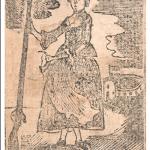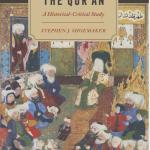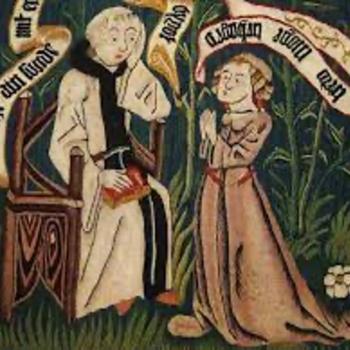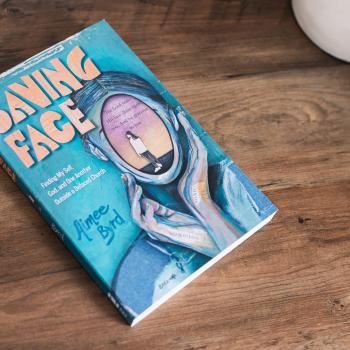
In a gloomy prison about 1,820 years ago, a young nursing mother, desperately missing her baby, concludes the journal that she has been writing over the previous few weeks. Tomorrow she will die. She had never written anything like this journal before. But then, she had never faced a challenge like this one before either. Raised in a sheltered home before her marriage, her life seemed so ordinary, so unexceptional for her place and time. Until she met Jesus.
Over a millennium and a half later, in a cold New England farmhouse, a hassled wife, mother, and midwife makes the unusual decision, for a woman of her place and time, to begin keeping her journal. She will continue writing it, logging her deliveries, but also such details as the annual planting of cabbages, until her death twenty-seven years later.
The young mother wonders, as her body, used to nourishing her infant son and so attuned to his needs, feels the physical pain of his new absence. But while he was able to be with her in her prison for some of her time there, it was not right for him to stay there with her until the end. But she is not alone in this prison. Together with her is an enslaved pregnant woman, guilty of the same crime: professing belief in Jesus in a world where this is a crime. As a result, she is subject to the same sentence: death in the arena. But pregnant women could not be executed according to Roman law, so the question still remains: will the two women die together tomorrow, or will one of them have to wait a bit longer, until she delivers her baby?
It is a cold winter’s night, and the snowfall, which began as just a gentle shower, has increased to a full-blown storm. But babies come when they come, as the midwife knows. She is not surprised to get a summons, therefore, in the middle of the night. Quickly getting bundled up, she resolutely gets on a horse and crosses the frozen Kennebec river to get to the laboring woman on the other side. Labors are challenging because so unpredictable. Sometimes she has been awakened out of bed and rushed to assist, only to discover that a false labor was afoot. Other times, she arrived too late—a problem, because missing a birth meant also missing her fee. But most of the time, she has arrived just in time to assist, as is the case this night. Her work, really, combines the tasks of what a modern-day doula would do, coaching a woman through hours of contractions and pushing, with the work of an informally trained medical professional that she was. And she takes pride in her extraordinary success rates. Unlike the doctors of her day, who had only recently begun challenging the midwives’ competence and competing with them for their work, she has hardly ever lost a mother or child.
In prison, the pregnant woman wonders at the unexpected new sensation coursing through her body. Could this be labor? An hour later, there is no doubt. The contractions grow stronger, longer, and the spaces between them shorten. As her baby finally makes its appearance towards dawn, she is exhausted from this sleepless night, her last one on earth. But she is also grateful that she will now be able to face her execution together with the others with whom she had been arrested. It is not that she does not love her newborn baby. She feels an extraordinary sensation of overwhelming love, looking at this tiny creature whom she had felt in her body for so many months, and who is now, for these brief hours, in her arms. But she, along with the young mother, with whom she is now imprisoned, but in whose house she had originally been enslaved, also knows that she is not afraid of death, if it means an eternity with God. For the two women, the noblewoman and her enslaved fellow-believer, their faith had become the great equalizer, so extraordinary for their society, which viewed this faith as a threat to order in the empire.
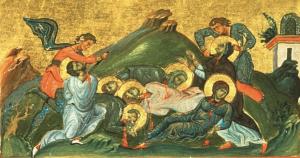
It is mid-day, and the exhausted midwife, who has not slept all night, is riding home across the frozen and snow-covered river. She has successfully delivered the baby a couple of hours ago, and after making sure that all is well, she has just now left the mother and baby resting together with the rest of their family. Her work is done, although she might check on the new mother in a few days, just to make sure that she and the baby are continuing to do well. Later in the day, she will add the entry to her journal about her nighttime adventure. She has delivered some babies before, but only recently, now that her own children are all out of infancy and early childhood, has she been able to begin making midwifery into a bona fide career. She enjoys the task of helping other women, and feels confident in her craft. And she has a quiet yet strong faith that comes across in her journal, in her expressions of gratitude to God for keeping her and the women whose babies she delivers safe in their most vulnerable moments.
Women’s journals, like the early third-century CE Roman passion narrative of Perpetua or the journal of Martha Ballard, the focus of Laurel Thatcher Ulrich’s book A Midwife’s Tale, are rare primary sources, and are perhaps all the more precious for historians as a result. Their accidental survival, after all, after their writers’ deaths in societies that did not value their voices in life, is nothing short of miraculous. In the case of Perpetua, she likely handed her journal on the night before her death to the two deacons from the local church who had faithfully visited her in prison. They likely took the journal in front of the leaders of the local church. Someone who chose to remain anonymous eventually added an introduction to it, and made the surprising decision to publish it. As for Martha Ballard, her descendants kept her journal in a jumble a box, before handing it to her great-great-granddaughter, Mary Hobart, who became a doctor. She, in turn, donated it to the Maine State Library, ensuring the document’s preservation and availability for future researchers.
But the lucky accidents of primary source survival are not the end of the story. You see, the question continues with each of us, readers, and especially so with those of us who, as professional historians, have to decide what to do with these sources. How do they fit into the stories that we have of the past? The problem is, in so many cases they don’t. Their voices are reminders of the fragile or, perhaps, overly quiet existence that women had in the premodern world. And the topics about which they write just seems so uncomfortable. Talking about nursing babies, labor and delivery, and the work of caring for the home just does not seem exciting to some historians, or maybe it is not relatable. I get it—it took the experience of nursing my own babies and experiencing the very painful phenomenon of engorgement before I even understood what Perpetua was talking about in her journal, when she mentioned her bodily longing for her nursing infant.
Yet these sources are also reminders for us as historians, especially of Christianity, not to get too comfortable in our perception of who are worthy historical subjects or what makes for the most productive historical sources. It is no coincidence that it is the faith that first saw women as equally worthy in God’s eyes as any man that also encouraged faithful believers to preserve women’s voices.


